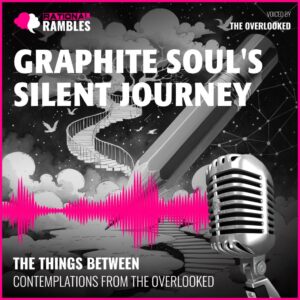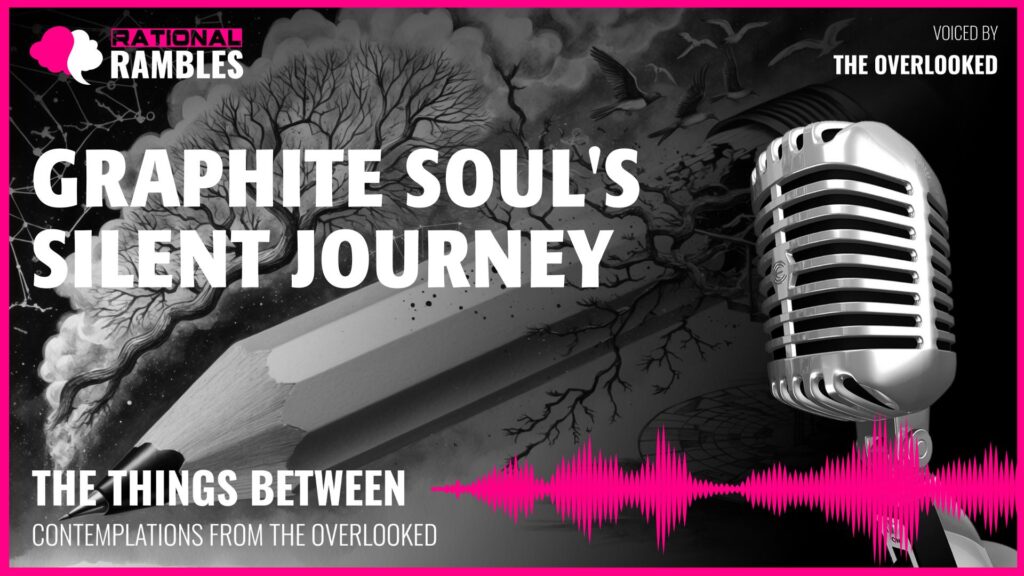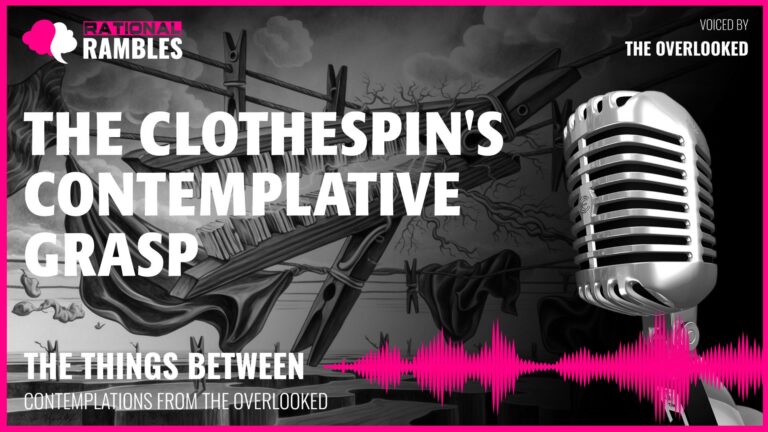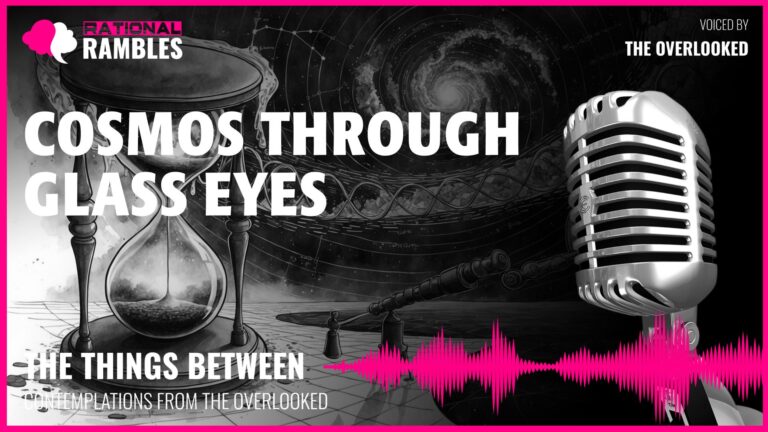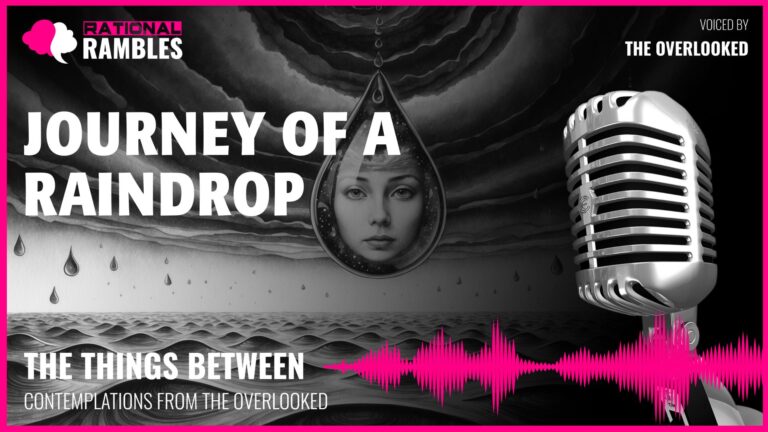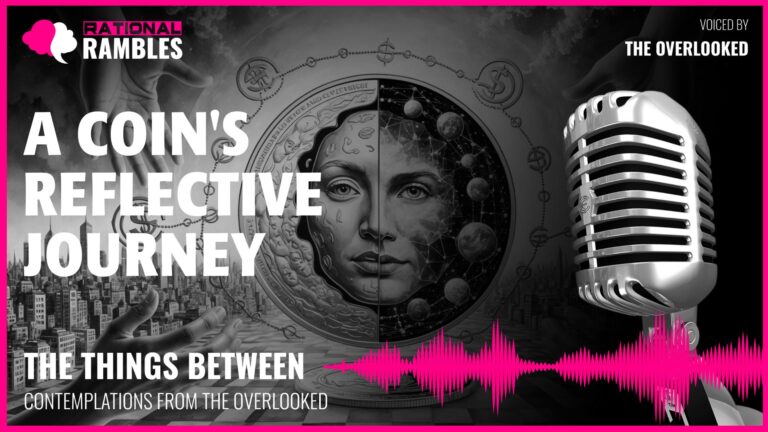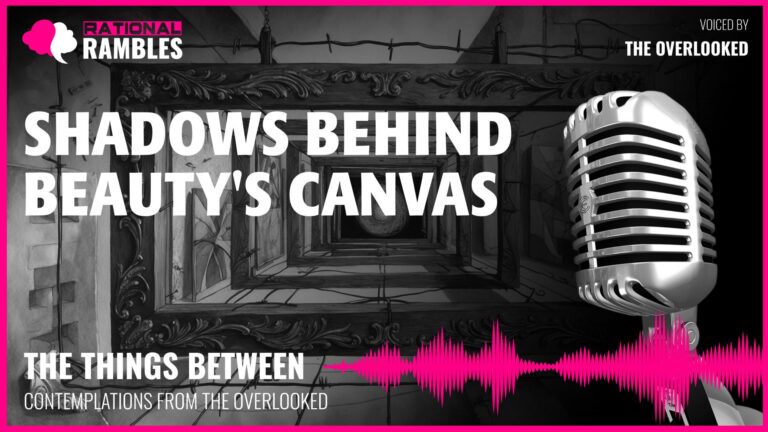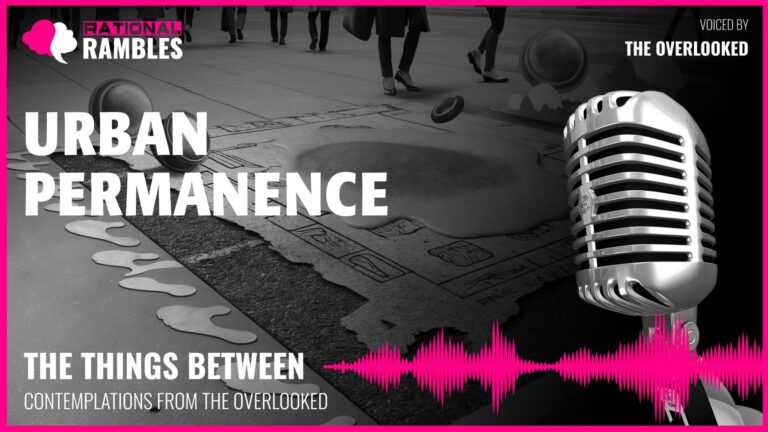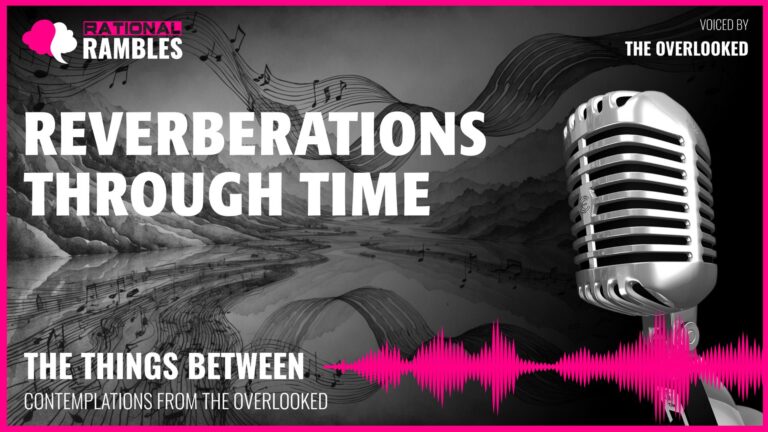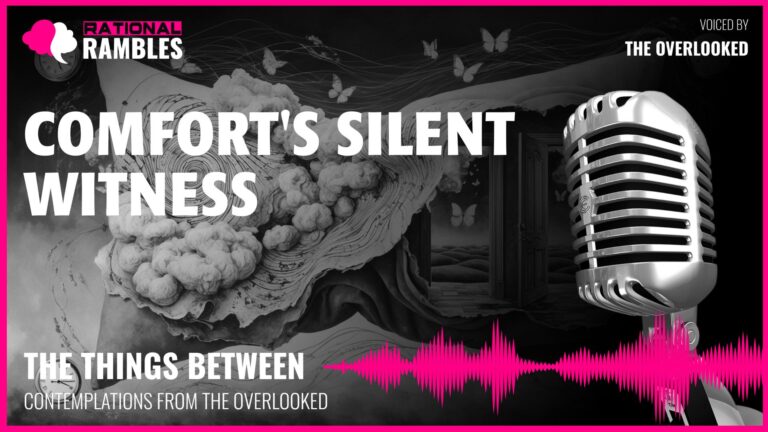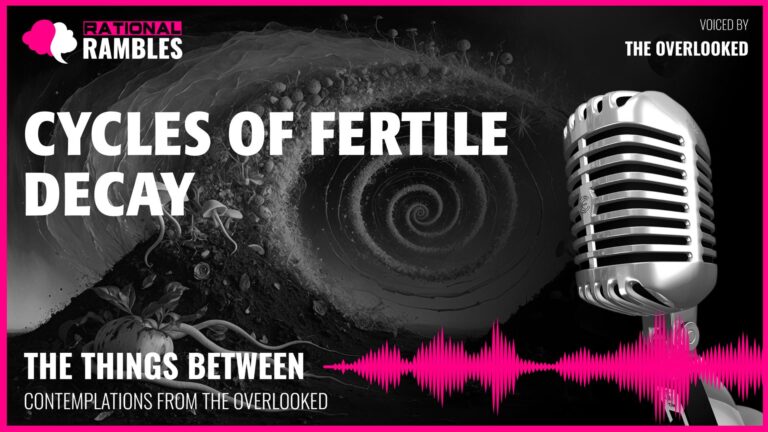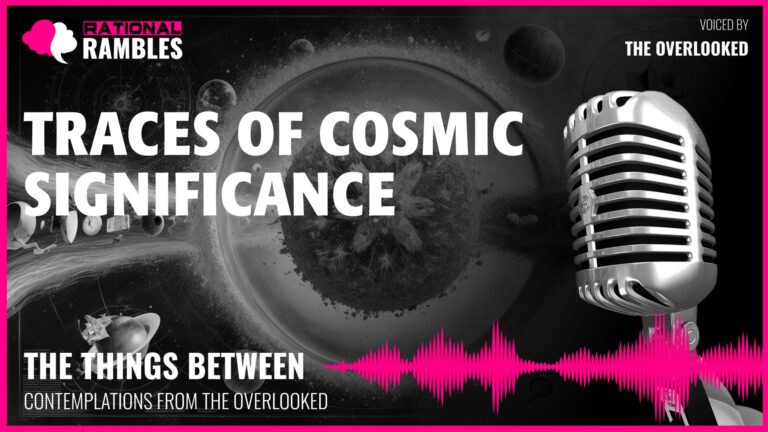The Marks We Leave: Impermanence, Creativity, and the Artifacts of Existence
Introduction
What does it mean to create something that will one day disappear? How does the knowledge of our own impermanence shape the marks we leave behind? In the perpetual dance between creation and dissolution, we find ourselves confronting fundamental questions about meaning, purpose, and legacy. Our existence, in many ways, mirrors the creative process itself—we emerge, we transform, we leave traces of ourselves in the world, and ultimately, we diminish. Yet within this seemingly melancholic reality lies a profound beauty: the opportunity to participate in meaning-making, to collaborate with time rather than merely succumb to it.
This article explores the philosophy of creative impermanence—the tension between our desire for lasting impact and the inherent transience of all things. By examining the nature of creation, the relationship between creator and medium, the value of revision and refinement, and the paradoxical immortality of ephemeral contributions, we can develop a richer understanding of what it means to exist in a world where everything, including ourselves, is gradually disappearing even as it transforms.
The Ontology of Creative Instruments
Before we can fully understand the philosophical implications of creative impermanence, we must first examine the nature of the instruments through which creativity manifests. What is the ontological status of a tool designed for creation? Is it merely matter configured for utility, or does it embody something more profound?
The Duality of Creative Mediums
Creative tools exist in a curious state of duality. They are simultaneously physical objects—composed of matter with specific properties—and vessels of potential. A blank canvas, an unplayed instrument, an empty page, or a lump of clay: each contains within it virtually unlimited possibilities. The philosopher Martin Heidegger distinguished between objects as “present-at-hand” (theoretical entities we observe) and “ready-to-hand” (equipment we use that becomes an extension of ourselves). Creative instruments exemplify this distinction particularly well, transforming from mere objects into extensions of human consciousness during the creative act.
This duality creates an ontological richness. The creative medium exists both as itself—with its own material properties, limitations, and affordances—and as a conduit for something beyond itself. It possesses what philosopher Graham Harman might call a “withdrawn” quality—a depth that is never fully exhausted by any particular use. No matter how many marks are made on a page, the page itself retains an inexhaustible potential for different marks, different meanings.
Metamorphosis and Identity
Many creative mediums undergo transformations before they can fulfill their purpose. Trees become paper, earth becomes pigment, sound becomes music. This metamorphosis raises questions about identity and essence. The ancient philosophical problem known as the Ship of Theseus asks whether an object that has had all its components replaced remains fundamentally the same object. We might similarly ask: when natural materials are reconfigured into creative instruments, what remains of their original essence? Is the transformation a kind of death or a kind of birth?
French philosopher Henri Bergson offers a useful perspective with his concept of élan vital—the vital impetus that drives evolution and creation. Perhaps the materials transformed into creative instruments are not so much dying as participating in a continuing flow of creative energy, changing form while maintaining connection to their origin. The tree that becomes paper still participates in the act of communication; it continues to connect humans to one another, albeit in a different form than when it produced oxygen or provided shade.
The Paradox of Purposeful Diminishment
Perhaps most philosophically rich is the paradox at the heart of many creative instruments: they fulfill their purpose by gradually disappearing. A pencil shortens with use, paint depletes from tubes, clay transforms under the sculptor’s hands. There is something profoundly existential about this diminishment—it parallels our own mortal condition. Like these creative tools, we too are “used up” by life, gradually spending our limited time and energy.
This parallel reveals a potential wisdom: perhaps meaning lies not in preservation of self but in the willingness to be transformed through purpose. The philosopher Simone Weil spoke of “decreation”—a willing self-diminishment that paradoxically leads to greater connection with the world. Creative instruments model this principle perfectly; they achieve their highest purpose not by remaining pristine and unused but by willingly participating in their own transformation.
The Dialectic of Creation and Erasure
Creation is often conceptualized as purely additive—bringing something into existence that wasn’t there before. Yet a closer examination reveals that creation exists in dialectical tension with erasure, deletion, and revision. This dialectic manifests across numerous philosophical domains, from aesthetics to existentialism.
The Necessity of Negation
The German philosopher Hegel proposed that progress occurs through a dialectical process: thesis (an initial idea), antithesis (its opposite or negation), and synthesis (a resolution that incorporates elements of both). This dialectical thinking finds remarkable expression in creative processes, where the ability to negate—to erase, delete, revise—is as essential as the ability to assert.
Consider the sculptor who, in Michelangelo’s famous phrase, removes everything that is not the statue. Or the writer who, as Blaise Pascal apologetically noted, writes a long letter because they “had not the leisure to make it shorter.” Creative refinement often requires subtraction, not merely addition. The philosopher Theodor Adorno discussed this in terms of “determinate negation”—negation that isn’t merely destructive but productive because it occurs in service of a more refined truth.
This necessity of negation challenges simplistic views of creation and suggests that impermanence—the ability to be erased, revised, or transformed—may be essential to meaningful creative acts. The capacity for erasure isn’t a liability but a feature of truly responsive creation.
Drafts, Revisions, and the Evolution of Thought
The phenomenon of revision illuminates another dimension of the creation-erasure dialectic. Why do we value the possibility of change? Why do drafts precede final versions? These questions touch on epistemological concerns about how we come to know and express truth.
The philosopher Karl Popper rejected the notion that knowledge progresses through confirmation, arguing instead for “falsifiability”—the capacity for beliefs to be proven wrong—as the cornerstone of genuine knowledge. Similarly, creative works develop not merely through accumulation but through the testing of possibilities, the discarding of inadequate expressions, the refinement that comes through revision.
This evolutionary model of creativity suggests that impermanence serves an essential epistemological function. Ideas need to exist provisionally before they can exist definitively. The capacity to mark tentatively, to exist in draft form, creates space for thought to evolve. As philosopher Richard Rorty might suggest, we need the freedom to “redescribe” both our expressions and ourselves as we develop more useful or compelling vocabularies.
The Ethical Dimensions of Erasure
The possibility of erasure also carries ethical implications. The capacity to revise or retract implies taking responsibility for what we’ve created. It acknowledges the possibility of error or harm and provides mechanisms for correction. The philosopher Emmanuel Levinas emphasized ethical responsibility toward the Other as fundamental to human existence; the ability to respond to feedback, to acknowledge missteps, to revise our expressions when they fail to respect or accurately engage with others, manifests this ethical responsibility in creative acts.
Simultaneously, the act of erasure raises questions about historical memory and accountability. When should marks remain visible, even if flawed, as testaments to process or warnings against repetition? When is erasure a form of honesty and when might it constitute evasion? These questions highlight the complex ethical terrain of impermanence in creative and communicative acts.
The Collaborative Nature of Creation
Creation is often romanticized as a solitary endeavor—the lone genius producing works of brilliance in isolation. Yet closer examination reveals that creation is fundamentally collaborative, involving complex interactions between creators, tools, materials, and audiences. This collaborative reality has profound implications for how we understand authorship, agency, and meaning.
The Creator-Medium Relationship
When we create, we enter into relationship with our materials and tools. This relationship cannot accurately be characterized as mere domination, where an active creator imposes form on passive matter. Rather, as philosophers like Jane Bennett have argued in developing theories of “vibrant materialism,” materials possess their own agencies, resistances, and affordances that shape the creative outcome.
The philosopher Maurice Merleau-Ponty described how a blind person’s cane becomes an extension of their sensory apparatus—not merely a tool but an integrated aspect of how they perceive the world. Similarly, creative instruments become extensions of consciousness, creating feedback loops between creator and medium. The resistance of clay suggests forms to the sculptor; the timbre of an instrument inspires particular melodies; the texture of paper influences how marks appear upon it.
This collaborative dance between creator and medium suggests that creation is not a unidirectional imposition of will but a conversation, a negotiation between multiple agencies. The creator does not create ex nihilo but participates in bringing forth possibilities that already exist within the medium.
Distributed Authorship
If creation is collaborative, then questions of authorship become more complex. Who “authors” a creative work? The immediate creator, certainly—but also the makers of their tools, the producers of their materials, the cultural influences that shaped their imagination, the audience whose expectations help frame the work.
Michel Foucault famously questioned the privileged status of the author in his essay “What Is an Author?” suggesting that the construct of singular authorship serves particular cultural and power functions. Expanding on this, we might see creative works as nodes in complex networks of influence, production, and reception rather than as discrete objects with singular origins.
This distributed understanding of authorship connects to philosopher Bruno Latour’s actor-network theory, which examines how human and non-human actors form networks that produce effects in the world. A creative work emerges from networks that include not only human intentions but material properties, cultural contexts, economic systems, and technological affordances.
The Role of the Audience
Creation does not end when the creator sets down their tools. The philosopher Hans-Georg Gadamer emphasized that understanding is always interpretive—meaning emerges through the fusion of horizons between text and reader, artwork and viewer. The audience completes the creative act through their engagement, bringing their own contexts and understandings.
This perspective transforms how we understand creative permanence and impermanence. A work’s “survival” depends not only on the durability of its physical form but on its continued relevance to new audiences, its capacity to generate new interpretations in changing contexts. Some ephemeral works—like oral traditions or performance art—may “persist” through their impact on cultural memory and practice even when the original expression has vanished.
The creative relationship thus extends beyond the moment of creation to encompass ongoing reinterpretation and response. A work continues to be “created” as long as it finds new audiences who engage with it meaningfully. This relational understanding suggests that permanence lies not in fixed form but in generative impact.
Time, Memory, and Material Traces
Creative acts occur in time, leave traces in space, and exist in complex relationship with memory. The philosophical questions surrounding temporality and materiality are particularly relevant to understanding the significance of impermanence in creative endeavors.
The Temporality of Creation
Creation exists in an interesting temporal dimension. It happens in the present moment—the stroke of brush on canvas, the typing of words on a page—yet it produces artifacts that may persist beyond that moment. The philosopher Henri Bergson distinguished between “clock time” (time as measured by intervals) and “duration” (time as actually experienced). Creative acts often generate their own temporality, a sense of time that doesn’t correspond neatly to chronological measurement.
This temporal complexity is evident in how we experience both the creation and appreciation of art. A painting completed in hours may be viewed for centuries; a symphony composed over years may be performed in minutes; a poem written in youth may resonate differently when read in old age. Creative works can compress, expand, or suspend our experience of time.
The temporality of creation also relates to what philosopher Walter Benjamin called the “aura” of an artwork—its unique existence in time and space. Benjamin worried that mechanical reproduction would diminish this aura, but perhaps the aura persists in the temporal relationship between creator, creation, and audience—the sense that something unique happened at a particular moment that continues to reverberate.
Material Traces and Memory
Creative acts leave material traces—marks on paper, pigment on canvas, carved stone, recorded sound. These traces function as externalizations of human consciousness, extending memory beyond the limitations of individual minds. As philosopher Merlin Donald has argued, this “external symbolic storage” represents a crucial development in human cognitive evolution.
Yet these material traces exist in tension with their own impermanence. Paper yellows, recordings degrade, stone erodes. Even digital media, often assumed to be more permanent, face technological obsolescence and physical deterioration of storage media. This material vulnerability raises profound questions about the relationship between meaning and medium.
The philosopher Jacques Derrida explored related questions through his concept of “the trace”—the mark that simultaneously indicates presence and absence. Every mark, Derrida suggested, carries within it the history of its creation and the anticipation of its potential erasure. The meaning of marks exists not in their perfect permanence but in this dynamic tension between presence and absence, memory and forgetting.
Valuing the Ephemeral
Different cultures and philosophical traditions have approached the value of impermanence in starkly different ways. Western traditions have often privileged permanence, seeking to create enduring monuments and preserve cultural artifacts against time’s erosion. By contrast, Japanese aesthetic traditions like mono no aware (the pathos of things) and wabi-sabi find beauty precisely in impermanence and imperfection.
Buddhist philosophy, particularly in the concept of anicca (impermanence), suggests that attachment to permanence creates suffering, while acceptance of transience leads to enlightenment. Even within Western tradition, philosophers like Heraclitus emphasized flux rather than stasis as the fundamental reality (“No man ever steps in the same river twice”).
These diverse perspectives invite us to reconsider default assumptions about the relationship between value and permanence. Perhaps some expressions gain meaning precisely because they are temporary—like spoken words, performances, or sand mandalas deliberately destroyed upon completion. Their impact may reside not in their physical persistence but in how they transform those who experienced them.
The Paradox of Diminishment and Legacy
At the heart of creative impermanence lies a profound paradox: the creator or creative instrument diminishes physically even as its impact expands conceptually. This tension between physical reduction and metaphysical extension offers rich philosophical territory for exploring broader questions of legacy, influence, and the nature of being.
Sacrifice and Transformation
Creative acts often require forms of sacrifice—the willing transformation or diminishment of one thing to produce another. The pencil shortens, the paint tube empties, the creator expends energy, attention, and time that cannot be recovered. This necessary expenditure connects creative activity to philosophical traditions concerned with sacrifice and transformation.
Philosophers from Hegel to Georges Bataille have explored how negation and sacrifice can paradoxically create meaning and value. Bataille particularly emphasized that meaningful expenditure often involves non-recuperable loss—spending that doesn’t expect direct return. The creative act exemplifies this: something is given up or transformed without guarantee that the resulting creation will endure or be valued.
Yet this willing diminishment becomes meaningful precisely because it participates in something larger than itself. The individual sacrifice contributes to cultural continuity, to shared understanding, to beauty or truth that exceeds the bounds of individual experience. As philosopher Charles Taylor might suggest, these sacrifices gain meaning within “social imaginaries” that provide frameworks for understanding what matters and why.
Transcendence Through Distribution
The creative paradox also manifests in how creators achieve a kind of transcendence by distributing aspects of themselves into the world. The philosopher Hannah Arendt distinguished between labor (which maintains life), work (which creates durable artifacts), and action (which occurs directly between people in the political realm). Creative activities interestingly combine elements of all three, especially work and action—producing artifacts that facilitate ongoing human relationships.
Through creative acts, individuals extend themselves beyond the boundaries of their physical bodies and finite lifespans. A creator’s ideas, expressions, and perspectives continue to participate in cultural conversations long after their physical presence has ended. This distribution of self represents a form of what philosopher Bernard Stiegler called “tertiary retention”—the externalization of human memory and thought into technological supports that outlast individual lives.
This transcendence through distribution suggests that identity itself may be more permeable and extended than traditional Western metaphysics has recognized. Rather than being confined to individual consciousness, selfhood might exist partly in the marks we leave, the influences we have, the changes we effect in others—a perspective aligned with Buddhist notions of interdependence and contemporary theories of extended cognition.
The Ethics of Legacy
The relationship between diminishment and legacy raises important ethical questions. What responsibilities do we have regarding what we leave behind? How should we balance the desire for lasting impact against awareness of our work’s potential impermanence? What kinds of traces deserve preservation, and which might better be allowed to fade?
Philosopher Hans Jonas proposed a “principle of responsibility” especially relevant to technological societies, arguing that our expanded power to affect the future creates expanded ethical obligations toward future generations. Similarly, our increased ability to leave enduring traces (both intentional and unintentional) may generate ethical obligations to consider the long-term implications of what we create.
These considerations connect to broader questions of intergenerational justice and environmental ethics. Just as we must consider the material waste our activities generate, we might also reflect on the informational, cultural, and psychological “residues” we leave behind. Some legacies nurture future flourishing; others may constrain or harm. Distinguishing between these requires careful ethical reflection about what kind of world we wish to help create.
Between Permanence and Obsolescence
Creative works and instruments exist in a middle space between absolute permanence and complete obsolescence. This liminal position offers unique insights into how meaning persists despite material change and how artifacts navigate shifting contexts of relevance.
Adaptation and Endurance
Some creative forms demonstrate remarkable longevity despite—or perhaps because of—their capacity for adaptation. Basic tools like writing implements have persisted across millennia while evolving in form and material. Similarly, fundamental creative forms like narrative, melody, or visual representation endure across cultures and eras while manifesting in culturally specific ways.
Philosopher Alasdair MacIntyre explored how traditions persist not through rigid preservation but through ongoing internal debates about their core practices and purposes. Similarly, enduring creative forms survive through continual reinterpretation and adaptation rather than perfect stasis. They remain relevant precisely because they can be reimagined for new contexts while maintaining connection to their origins.
This adaptability suggests that true permanence may lie not in unchanging form but in the capacity to evolve while maintaining identity—what philosophers of biology call “homeostasis,” the maintenance of essential functions despite changing conditions. Creative traditions and tools demonstrate cultural homeostasis, preserving core functions while adapting their specific manifestations.
Obsolescence and Revival
The lifecycle of creative forms and tools often includes periods of apparent obsolescence followed by unexpected revivals. Technologies declared outdated—vinyl records, film photography, handcrafting—frequently return as valued alternatives to newer forms, appreciated for their distinctive qualities and connections to tradition.
This pattern challenges linear narratives of progress that assume newer always supersedes older. Instead, it suggests what philosopher Michel Serres called “folded time”—a temporality where past, present, and future exist in complex, non-linear relationship. Elements from different historical periods coexist and recombine rather than simply replacing one another in sequence.
These cycles of obsolescence and revival also reveal how technological and creative evolution often occurs not through replacement but through specialization and diversification. New forms don’t simply eliminate older ones but create more nuanced ecologies of practice where different approaches serve different purposes or aesthetic values. Digital photography doesn’t eradicate film; rather, film finds new meaning as an intentional aesthetic choice rather than a technical necessity.
The Archive and Cultural Memory
How societies preserve and organize creative artifacts profoundly shapes which works endure and how they’re understood. The archive—both as physical institution and conceptual framework—plays a crucial role in negotiating between permanence and obsolescence.
Jacques Derrida examined how archives don’t merely preserve the past but actively construct it through decisions about what merits preservation and how materials are organized and contextualized. These decisions reflect power structures and cultural values that determine whose creative expressions are deemed worthy of remembrance.
Digital technologies have transformed archival possibilities, dramatically expanding what can be preserved while simultaneously creating new vulnerabilities through format obsolescence and information overload. This situation creates what media theorist Wolfgang Ernst calls a tension between cultural memory (the living, evolving understanding of the past) and data storage (the technical preservation of information that may become unreadable or meaningful).
These archival challenges mirror broader philosophical questions about meaning and context. As philosopher Walter Benjamin noted, artifacts removed from their original contexts and placed in archives or museums undergo significant transformations in meaning. The attempt to preserve permanently may paradoxically change what is being preserved. This suggests that meaningful endurance requires not just physical preservation but ongoing recontextualization and reinterpretation.
Creating in the Face of Finitude
The knowledge of impermanence—both of our creations and ourselves—fundamentally shapes the creative process. How does awareness of finitude influence creative choices? What meanings emerge when we create despite knowing our works may not last?
Creativity as Existential Response
Existentialist philosophers like Jean-Paul Sartre emphasized that human existence precedes essence—we have no predetermined nature but must create ourselves through our choices and actions. Creative activities represent particularly powerful manifestations of this self-creation. By making marks, building structures, composing music, or writing stories, we externalize our internal freedom and participate in defining who we are.
Albert Camus suggested that the fundamental philosophical problem is whether life is worth living in an absurd universe without inherent meaning. His response emphasized revolt against meaninglessness through creating meaning—even temporary meaning—through our actions and works. Creative acts represent a form of what he called “metaphysical rebellion,” an assertion of human dignity and value in the face of cosmic indifference.
From this existentialist perspective, the impermanence of creative works doesn’t diminish their significance but heightens it. Like human life itself, creative works derive meaning not from eternal duration but from their authentic expression of freedom, choice, and response to circumstance. Their very transience makes them poignantly human.
Creating Against Time
Creative acts exist in complex relationship with time—simultaneously working within time’s constraints and attempting to transcend them. The philosopher Martin Heidegger characterized human existence as “being-toward-death,” suggesting that awareness of mortality fundamentally structures how we experience time and possibility.
This temporal consciousness creates what philosopher Bernard Stiegler called “care”—concern for what endures beyond the present moment. Creative acts manifest this care by attempting to capture fleeting experiences, preserve memories, or articulate truths deemed worthy of transmission. They represent efforts to extend human consciousness beyond its temporal limitations.
Yet creative works also accept and incorporate temporal limitations rather than merely opposing them. Time-based arts like music, theater, or dance work within temporal boundaries, creating meaning through rhythm, development, and closure. Even static arts like painting or sculpture acknowledge temporality through composition, style, and reference to changing traditions.
This dialogue with time suggests that meaningful creation involves neither denial of impermanence nor capitulation to it, but rather thoughtful engagement with temporal reality—using time’s constraints as creative parameters while seeking expressions that resonate beyond immediate circumstances.
The Ethics of Creating Impermanently
If all human creation is ultimately impermanent, what ethical principles should guide our creative choices? How do we create responsibly in the knowledge that our works will eventually disappear or transform beyond recognition?
Environmental philosophy offers relevant perspectives through concepts like sustainability and intergenerational justice. Philosopher Hans Jonas argued that technological power creates responsibility to consider long-term consequences. Similarly, creative choices might be evaluated partly through their relationship to resources, waste generation, and potential persistence as pollution.
Beyond material concerns lie questions about information ecology and attention ethics. In a world saturated with content, creating responsibly might mean considering whether new creations contribute meaningfully or merely add to overwhelming noise. As philosopher Byung-Chul Han suggests, our “excess of positivity”—the proliferation of information and stimuli—can create new forms of exhaustion and alienation.
These considerations suggest a potential ethic of creative restraint—creating not simply because we can but because what we create serves meaningful purposes, whether artistic, practical, or communicative. Paradoxically, embracing impermanence might encourage more thoughtful creation precisely by reminding us that not everything needs to last forever.
Conclusion: The Wisdom of Graphite
Throughout this exploration of creative impermanence, we’ve examined how the dialectic between creation and diminishment reveals profound insights about existence, meaning, and legacy. The parallel between creative instruments and human life illuminates both: like the pencil that gradually shortens as it makes its mark, we spend our limited time and energy leaving traces in the world.
Several philosophical lessons emerge from this contemplation. First, meaning often emerges precisely through transformation and willing diminishment rather than through perfect preservation. The pencil that remains pristine in the drawer makes no mark; the life lived in fearful self-protection leaves little impression. Something must be given up for something meaningful to emerge.
Second, collaboration rather than domination characterizes the most profound creative relationships. Whether between artists and their mediums, writers and language, or humans and the world they inhabit, creativity flourishes when we recognize and respond to the agency of what we work with rather than simply imposing our will upon passive matter.
Third, revision and refinement—the courage to erase, to start again, to acknowledge imperfection—prove as essential to meaningful creation as initial inspiration. The capacity to change course represents not weakness but wisdom; not indecision but responsive intelligence.
Finally, perhaps most profoundly, creation offers a response to finitude that neither denies mortality nor succumbs to nihilism. By creating despite impermanence—or even in dialogue with it—we participate in meaning that transcends individual limitation without requiring literal immortality.
As we face unprecedented environmental challenges and technological transformations, these philosophical insights about creative impermanence become increasingly relevant. They suggest approaches to meaning and value that don’t depend on unlimited consumption or permanent accumulation but find fulfillment in mindful participation, thoughtful contribution, and acceptance of natural cycles of growth and decline.
In the humble act of marking paper, we glimpse something essential about human existence: we are beings who leave traces, who transform ourselves through what we create, who participate in meaning-making despite—or perhaps because of—our transience. The wisdom of creative impermanence reminds us that significance lies not in enduring unchanged but in willingly becoming part of the ongoing creative conversation that extends beyond any individual life.


